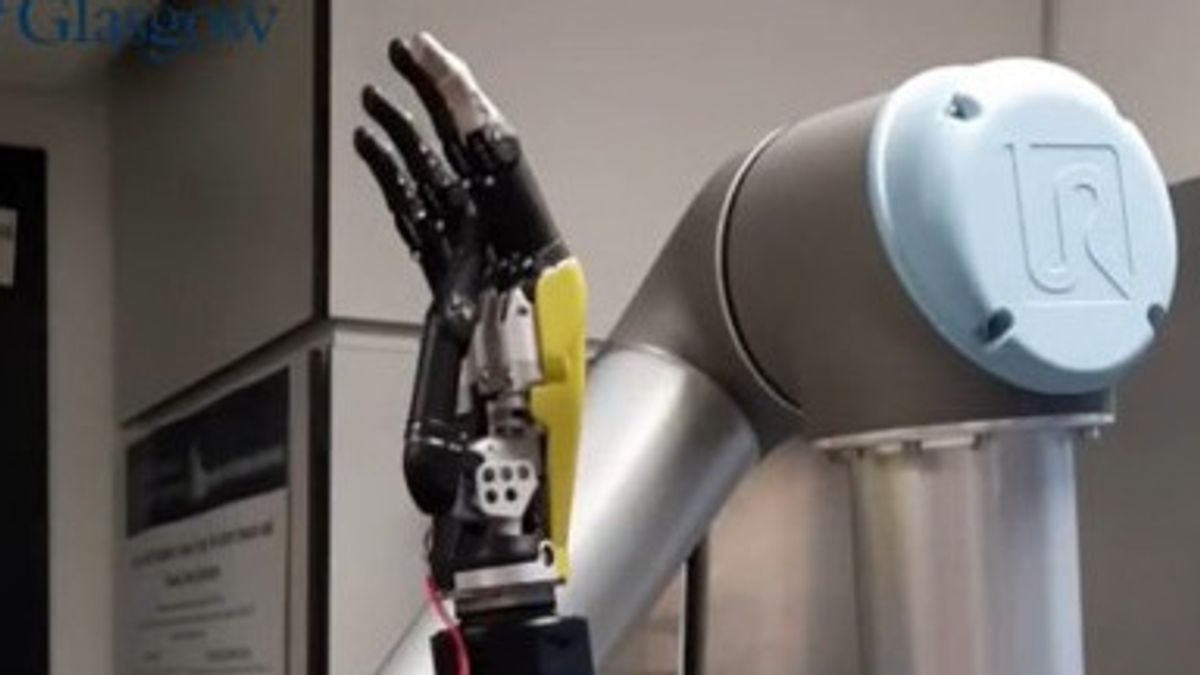JAKARTA - It turns out that not only human skin can feel pain when injured, researchers in the UK have succeeded in creating an electronic skin (e-skin) that has the same capabilities as human skin.
Researchers think this electronic skin could help create a new generation of smart robots with human-like sensitivity and the ability to learn from painful mistakes.
These electronic or artificial skins are made with a new type of processing system based on synaptic transistors that mimic the brain's neural pathways for learning. The skin is embedded in the robot's skeleton, which demonstrates an uncanny ability to learn to react to external stimuli.
The creation of this electronic skin was conceived by a team of engineers from the University of Glasgow, led by Professor Ravinder Dahiya, they explain how to build a prototype computational electronic skin (e-skin), and how it enhances the current state of the art in touch-sensitive robotics.
"We all learn early in our lives to respond appropriately to unexpected stimuli such as pain to prevent us from hurting ourselves again," Professor Dahiya said.
This research was not short, they spent several years completing it. One widely explored method is to deploy a series of contact or pressure sensors across the surface of electronic skin to detect when it comes into contact with an object.
The data from the sensors is then sent to a computer for processing and interpretation. Sensors typically generate large volumes of data that take time to properly process and respond, causing delays that can reduce the skin's potential effectiveness in real-world tasks.
The Glasgow team's new form of electronic skin takes inspiration from how the human peripheral nervous system interprets signals from the skin to eliminate latency and power consumption.
VOIR éGALEMENT:
As soon as the human skin receives input, the peripheral nervous system begins to process it at the point of contact, reducing it to only essential information before being sent to the brain.
That reduction in sensory data allows for efficient use of the communication channels needed to send data to the brain, which then responds immediately for the body to react appropriately. The development of electronic skins is the latest breakthrough in flexible printing surfaces.
"Of course, the development of this new form of electronic skin isn't really as painless as we know it to be, it's just a shorthand way of explaining the learning process from external stimuli," said Professor Dahiya.
According to Professor Dahiya, what he was able to create through this process was an electronic skin capable of distributing learning at the hardware level, which did not need to send messages back and forth to a central processor before taking action.
"On the contrary, it greatly speeds up the process of responding to touch by reducing the amount of computation required. We believe that this is a real step forward in our work to create a large-scale neuromorphic imprinted electronic skin capable of responding appropriately to stimuli," said Professor Dahiya.
The study, entitled "Printed Synaptic Transistors based Electronic Skin for Robots to Feel and Learn", has been published in Science Robotics.
The English, Chinese, Japanese, Arabic, and French versions are automatically generated by the AI. So there may still be inaccuracies in translating, please always see Indonesian as our main language. (system supported by DigitalSiber.id)











